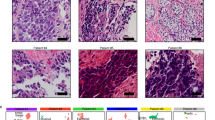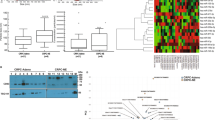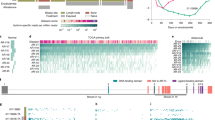Abstract
Neuroendocrine (NE) differentiation is a hallmark of advanced, androgen-independent prostate cancer, for which there is no successful therapy. NE tumor cells are nonproliferating and escape apoptotic cell death; therefore, an understanding of the apoptotic status of the NE phenotype is imperative for the development of new therapies for prostate cancer. Here, we report for the first time on alterations in intracellular Ca2+ homeostasis, which is a key factor in apoptosis, caused by NE differentiation of androgen-dependent prostate cancer epithelial cells. NE-differentiating regimens, either cAMP elevation or androgen deprivation, resulted in a reduced endoplasmic reticulum Ca2+-store content due to both SERCA 2b Ca2+ ATPase and luminal Ca2+ binding/storage chaperone calreticulin underexpression, and to a downregulated store-operated Ca2+ current. NE-differentiated cells showed enhanced resistance to thapsigargin- and TNF-α-induced apoptosis, unrelated to antiapoptotic Bcl-2 protein overexpression. Our results suggest that targeting the key players determining Ca2+ homeostasis in an attempt to enhance the proapoptotic potential of malignant cells may prove to be a useful strategy in the treatment of advanced prostate cancer.
Similar content being viewed by others

Log in or create a free account to read this content
Gain free access to this article, as well as selected content from this journal and more on nature.com
or
Abbreviations
- NE:
-
neuroendocrine
- LNCaP:
-
lymph node carcinoma of the prostate
- ER:
-
endoplasmic reticulum
- I SOC :
-
store-operated Ca2+ current
- TG:
-
thapsigargin
- NSE:
-
neuron-specific enolase
- Bt2cAMP:
-
dibutyryl cAMP
- IBMX:
-
isobutylmethylxanthine
- SOCE:
-
store-operated Ca2+ entry
- ctrl-LNCaP:
-
control LNCaP cell
- NE-cAMP-LNCaP:
-
LNCaP cells differentiated into NE phenotype by [cAMP]in elevation
- NE-Andr(−)-LNCaP:
-
LNCaP cells differentiated into NE phenotype by androgen deprivation
- TUNEL technique:
-
terminal deoxynucleotide transferase-mediated dUTP-biotin nick-end labelling
- IAP:
-
inhibitor of apoptosis
- CRT:
-
calreticulin
References
Feldman BJ and Feldman D (2001) The development of androgen-independent prostate cancer. Nat. Rev. Cancer 1: 34–45
Raffo AJ, Perlman H, Chen MW, Day ML, Streitman JS and Buttyan R (1995) Overexpression of Bcl-2 protects prostate cancer cells from apoptosis in vitro and confers resistance to androgen depletion in vivo. Cancer Res. 55: 4438–4445
Fixemer T, Remberger K and Bonkhoff H (2002) Apoptosis resistance of neuroendocrine phenotypes in prostatic adenocarcinoma. Prostate 53: 118–123
Abrahamsson PA (1999) Neuroendocrine cells in tumour growth of the prostate. Endocr. Relat. Cancer 6: 503–519
di Sant'Agnese PA (1998) Neuroendocrine cells of the prostate and neuroendocrine differentiation in prostatic carcinoma: a review of morphologic aspects. Urology 51: 121–124
di Sant'Agnese PA (1992) Neuroendocrine differentiation in carcinoma of the prostate. Diagnostic, prognostic, and therapeutic implications. Cancer 70: 254–268
Bonkhoff H and Remberger K (1996) Differentiation pathways and histogenetic aspects of normal and abnormal prostatic growth: a stem cell model. Prostate 28: 98–106
Aumuller G, Leonhardt M, Janssen M, Konrad L, Bjartell A and Abrahamssonn PA (1999) Neurogenic origin of human prostate endocrine cells. Urology 53: 1041–1048
Krijnen JL, Janssen PJ, Ruizeveld de Winter JA, van Krimpen H, Schroder FH and van der Kwast TH (1993) Do neuroendocrine cells in human prostate cancer express androgen receptor? Histochemistry 100: 393–398
Bonkhoff and H (2001) Neuroendocrine differentiation in human prostate cancer. Morphogenesis, proliferation and androgen receptor status. Ann. Oncol. 12: S141–S144
Ito T, Yamamoto S, Ohno Y, Namiki K, Aizawa T, Akiyama A and Tachibana M (2001) Up-regulation of neuroendocrine differentiation in prostate cancer after androgen deprivation therapy, degree and androgen independence. Oncol. Rep. 8: 1221–1224
Xue Y, Verhofstad A, Lange W, Smedts F, Debruyne F, de la Rosette J and Schalken J (1997) Prostatic neuroendocrine cells have a unique keratin expression pattern and do not express Bcl-2: cell kinetic features of neuroendocrine cells in the human prostate. Am. J. Pathol. 151: 1759–1765
Xing N, Qian J, Bostwick D, Bergstralh E and Young CY (2001) Neuroendocrine cells in human prostate over-express the anti-apoptosis protein survivin. Prostate 48: 7–15
July LV, Akbari M, Zellweger T, Jones EC, Goldenberg SL and Gleave ME (2002) Clusterin expression is significantly enhanced in prostate cancer cells following androgen withdrawal therapy. Prostate 50: 179–188
Vanden Abeele F, Skryma R, Shuba Y, Van Coppenolle F, Slomianny C, Roudbaraki M, Mauroy B, Wuytack F and Prevarskaya N (2002) Bcl-2-dependent modulation of Ca(2+) homeostasis and store-operated channels in prostate cancer cells. Cancer Cell 1: 169–179
Horoszewicz JS, Leong SS, Kawinski E, Karr JP, Rosenthal H, Chu TM, Mirand EA and Murphy GP (1983) LNCaP model of human prostatic carcinoma. Cancer Res. 43: 1809–1818
Bang YJ, Pirnia F, Fang WG, Kang WK, Sartor O, Whitesell L, Ha MJ, Tsokos M, Sheahan MD and Nguyen P (1994) Terminal neuroendocrine differentiation of human prostate carcinoma cells in response to increased intracellular cyclic AMP. Proc. Natl. Acad. Sci. USA 91: 5330–5334
Burchardt T, Burchardt M, Chen MW, Cao Y, de la Taille A, Shabsigh A, Hayek O, Dorai T and Buttyan R (1999) Transdifferentiation of prostate cancer cells to a neuroendocrine cell phenotype in vitro and in vivo. J. Urol. 162: 1800–1805
Zelivianski S, Verni M, Moore C, Kondrikov D, Taylor R and Lin MF (2001) Multipathways for transdifferentiation of human prostate cancer cells into neuroendocrine-like phenotype. Biochim. Biophys. Acta 1539: 28–43
Berridge MJ, Bootman MD and Lipp P (1998) Calcium – a life and death signal. Nature 395: 645–648
McConkey DJ and Orrenius S (1997) The role of calcium in the regulation of apoptosis. Biochem. Biophys. Res. Commun. 239: 357–366
Deeble PD, Murphy DJ, Parsons SJ and Cox ME (2001) Interleukin-6- and cyclic AMP-mediated signaling potentiates neuroendocrine differentiation of LNCaP prostate tumor cells. Mol. Cell. Biol. 21: 8471–8482
Mariot P, Vanoverberghe K, Lalevée N, Rossier MF and Prevarskaya N (2002) Overexpression of an alpha IH (Cav 3.2) T-type calcium channel during neuroendocrine differentiation of human prostate cancer cells. J. Biol. Chem. 277: 10824–10833
Huang Jr Y and Putney JW (1998) Relationship between intracellular calcium store depletion and calcium release-activated calcium current in a mast cell line (RBL-1). J. Biol. Chem. 273: 19554–19559
Hoth M and Penner R (1993) Release-activated calcium current in rat mast cells. J. Physiol. 465: 359–386
Skryma R, Mariot P, Bourhis XL, Coppenolle FV, Shuba Y, Vanden Abeele F, Legrand G, Humez S, Boilly B and Prevarskaya N (2000) Store depletion and store-operated Ca2+ current in human prostate cancer LNCaP cells: involvement in apoptosis. J. Physiol. 527: 71–83
Ashkenazi A and Dixit VM (1998) Death receptors: signaling and modulation. Science 281: 1305–1308
Kass GE and Orrenius S (1999) Calcium signaling and cytotoxicity. Environ. Health Perspect. 107: 25–35
Mathiasen IS, Sergeev IN, Sergeev L, Bastholm F, Elling AW, Norman and Jaattela M (2002) Calcium and calpain as key mediators of apoptosis-like death induced by vitamin D compounds in breast cancer cells. J. Biol. Chem. 277: 30738–30745
Juin P, Pelletier M, Oliver L, Tremblais K, Gregoire M, Meflah K and Vallette FM (1998) Induction of a caspase-3-like activity by calcium in normal cytosolic extracts triggers nuclear apoptosis in a cell-free system. J. Biol. Chem. 273: 17559–17564
Paschen W and Doutheil J (1999) Disturbance of endoplasmic reticulum functions: a key mechanism underlying cell damage? Acta Neurochir. Suppl. (Wien) 73: 1–5
Nakamura K, Bossy-Wetzel E, Burns K, Fadel MP, Lozyk M, Goping IS, Opas M, Bleackley RC, Green DR and Michalak M (2000) Changes in endoplasmic reticulum luminal environment affect cell sensitivity to apoptosis. J. Cell Biol. 150: 731–740
Montironi R, Pomante R, Diamanti L and Magi-Galluzzi C (1998) Apoptosis in prostatic adenocarcinoma following complete androgen ablation. Urol. Int. 60: 25–39
Lee C, Janulis L, Ilio K, Shah A, Park I, Kim S, Cryns V, Pins M and Bergan R (2000) In vitro models of prostate apoptosis: clusterin as an antiapoptotic mediator. Prostate Suppl. 9: 21–24
Yamamoto T and Tanigawa N (2001) The role of survivin as a new target of diagnosis and treatment in human cancer. Med. Electron. Microsc. 34: 207–212
Koch-Brandt C and Morgans C (1996) Clusterin: a role in cell survival in the face of apoptosis? Prog. Mol. Subcell. Biol. 16: 130–149
Takai N, Miyazaki T, Nishida M, Nasu K and Miyakawa I (2002) Expression of survivin is associated with malignant potential in epithelial ovarian carcinoma. Int. J. Mol. Med. 10: 211–216
Nasu S, Yagihashi A, Izawa A, Saito K, Asanuma K, Nakamura N, Kobayashi D, Okazaki M and Watanabe N (2002) Survivin mRNA expression in patients with breast cancer. Anticancer Res. 22: 1839–1843
Kajiwara Y, Yamasaki F, Hama S, Yahara K, Yoshioka H, Sugiyama K, Arita K and Kurisu K (2003) Expression of survivin in astrocytic tumors. Cancer 97: 1077–1083
Viard I, Wehrli P, Jornot L, Bullani R, Vechietti JL, Schifferli JA, Tschopp J and French LE (1999) Clusterin gene expression mediates resistance to apoptotic cell death induced by heat shock and oxidative stress. J. Invest. Dermatol. 112: 290–296
Clapham DE, Runnels LW and Strubing C (2001) The TRP ion channel family. Nat. Rev. Neurosci. 2: 387–396
Minke B and Cook B (2002) TRP channel proteins and signal transduction. Physiol. Rev. 82: 429–472
Venkatachalam K, van Rossum DB, Patterson RL, Ma HT and Gill DL (2002) The cellular and molecular basis of store-operated calcium entry. Nat. Cell Biol. 4: E263–E272
Vanden Abeele F, Roudbaraki M, Shuba Y, Skryma R and Prevarskaya N (2003) Store-operated Ca2+ current in prostate cancer epithelial cells. Role of endogenous Ca2+ transporter type 1. J. Biol. Chem. 278: 15381–15389
Acknowledgements
This work was supported by grants from INSERM, La Ligue Nationale Contre le Cancer and l'ARC (France), Association pour la Recherche sur les Tumeurs de la Prostate (ARTP), Fondation pour la Recherche Médicale (FRM), and INTAS-99-01248. YM Shuba was supported by INSERM and the French Ministry of Science.
Author information
Authors and Affiliations
Corresponding author
Additional information
Edited by JA Cidlowski
Rights and permissions
About this article
Cite this article
Vanoverberghe, K., Vanden Abeele, F., Mariot, P. et al. Ca2+ homeostasis and apoptotic resistance of neuroendocrine-differentiated prostate cancer cells. Cell Death Differ 11, 321–330 (2004). https://doi.org/10.1038/sj.cdd.4401375
Received:
Revised:
Accepted:
Published:
Issue date:
DOI: https://doi.org/10.1038/sj.cdd.4401375
Keywords
This article is cited by
-
STIM1 in tumor cell death: angel or devil?
Cell Death Discovery (2023)
-
The Role οf Ion Channels in the Development and Progression of Prostate Cancer
Molecular Diagnosis & Therapy (2023)
-
Clinical-Pathological Conference Series from the Medical University of Graz
Wiener klinische Wochenschrift (2021)
-
[Pt(O,O'-acac)(γ-acac)(DMS)]: Alternative Strategies to Overcome Cisplatin-Induced Side Effects and Resistance in T98G Glioma Cells
Cellular and Molecular Neurobiology (2021)
-
Stimulation of neuroendocrine differentiation in prostate cancer cells by GHRH and its blockade by GHRH antagonists
Investigational New Drugs (2020)


